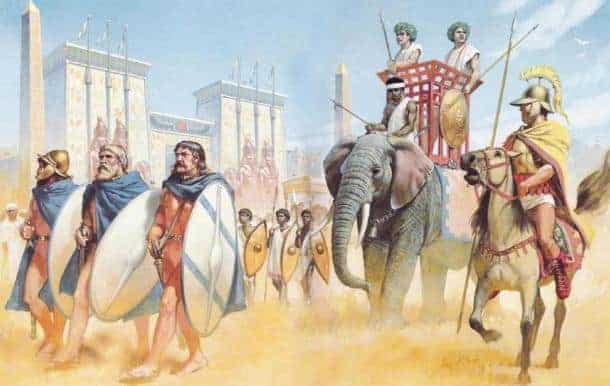Mercenaries – warriors hired to take part in armed conflicts, without being a formal part of a government’s forces – have played significant roles throughout much of history. Although their fortunes declined with the rise of national armies in the 18th century, mercenaries have continued to fill niche needs that enabled them to survive into the present. Indeed, mercenaries, known today as “private military contractors”, have experienced a revival since 2003’s Operation Iraqi Freedom.
Following are sixteen of history’s most significant mercenaries and mercenary bands.

16 – The Abbasid Caliphs Discovered the Folly of Hiring Mercenaries Without Being Able to Control Them
The Abbasid Caliphate (750 – 1258) was the second of two hereditary dynasties that claimed suzerainty over the Islamic empire. At the height of their powers, the Abbasids ruled a realm stretching from the Atlantic Ocean to the borders of China, and from Central Asia to the borders of India. Their fortunes took a nose dive when shortsighted caliphs hired Turkish mercenaries, then failed to control them.
It began in the 9th century, with al Mu’tasim, a younger son of the dynasty’s most famous caliph, Harun al Rashid – a contemporary of Charlemagne and a recurring character in the Arabian Nights fables. Al Mu’tasim created a private army of Turkish mercenaries and slaves, and formed them into a Turkish Guard that helped him secure the caliphate in 833. However, the mercenaries engaged in widespread robberies and rapes that made them hugely unpopular with the civilian population. So in a bid to reduce the friction between his subjects and soldiers, al Mu’tasim relocated his capital in 835 from Baghdad to a new city, Samarra. That calmed things down for a while, but did not solve the core issue of controlling the Turkish mercenaries.
Things came to a head in 1861, in what came to be known as “The Anarchy at Samarra”. It began when the Turkish Guard murdered the caliph al Mutawakkil, and replaced him with his brother, al Muntasir. The new caliph lasted for six months, before the Turks did him in, then held a conference to appoint a successor, al Musta’in. He escaped in 865, but the mercenaries pursued, captured, and put him to death. They then appointed another caliph, al Mu’tazz, but when he bucked, they deposed and killed him in 869, replacing him with another puppet, al Muhtadi. He, too, tried to assert his authority, only to get murdered by the mercenaries and replaced in 870. The anarchy finally ended with the appointment of a caliph who accepted his role as a puppet.
The Abbasid Caliphate stumbled on for another four centuries, surviving as a shadow of what it had once been, with its caliphs as playthings of strongmen and sultans. It was finally put out of its misery in 1258, when the Mongols sacked Baghdad, and executed the last Caliph by rolling him inside a rug and trampling him to death beneath their horses’ hooves.

